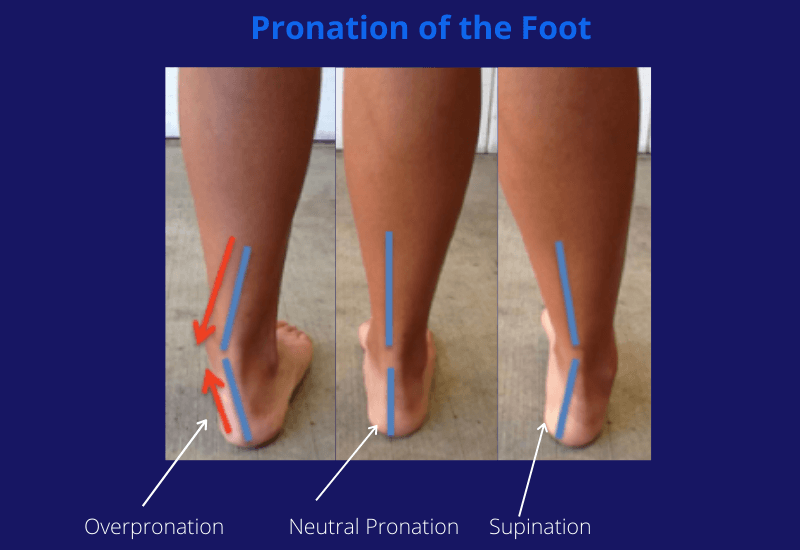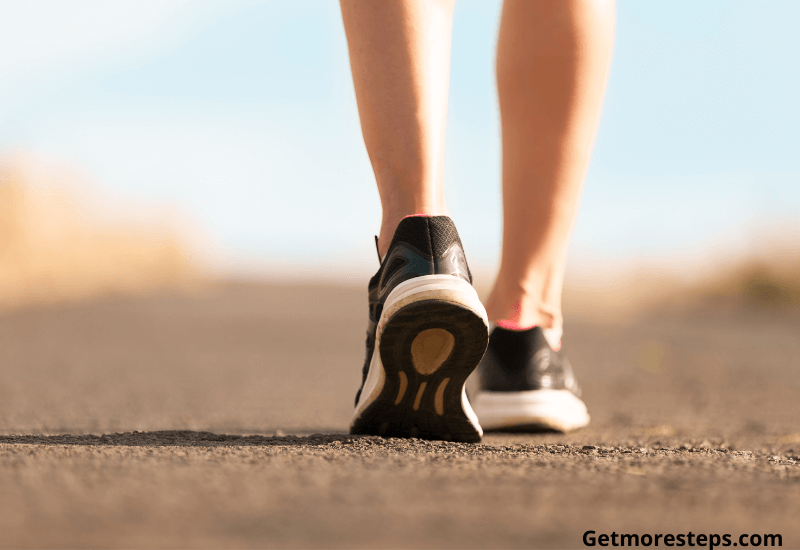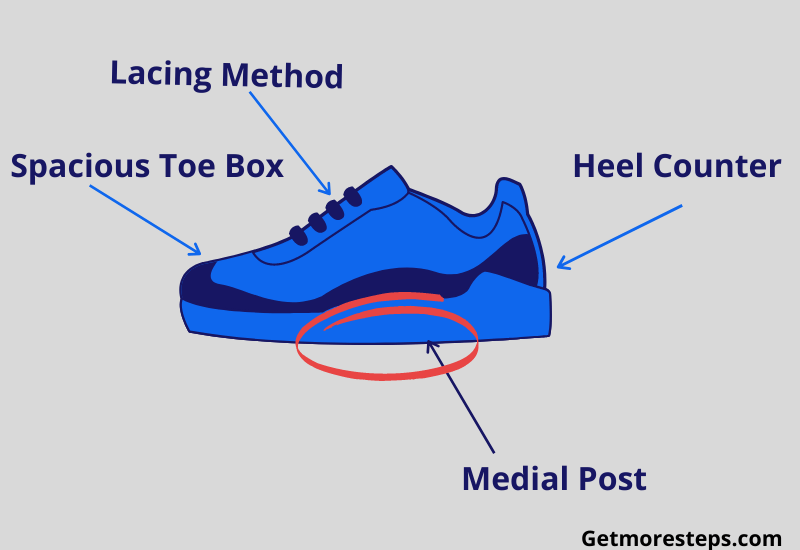If you’ve landed on this page, it’s certainly because you want to know what are stability shoes and if you need to get pair for yourself. Right? This is an excellent question; after all, you want the best for your feet, as they take you everywhere you want to go. So without further ado, let’s dive into it right now so you can decide whether you need or not stability shoes.
Contents
- 1
- 2 What Stability Shoes Are And What They Do?
- 3 Understanding the Pronation of the Foot
- 4
- 5 How to Know You Need Stability Shoes?
- 6 Can Anyone Wear Stability Shoes?
- 7 What to Look for in Stability Shoes?
- 8 What Are Motion Control Shoes?
- 9 Differences Between Motion Control Shoes and Stability Soes.
- 10 My Final Words
What Stability Shoes Are And What They Do?
Stability shoes are constructed with supportive features around the midsole, more precisely in the midfoot section. These shoes are designed especially for people who have light to moderate overpronation. These stability features are meant to help maintain your foot in a neutral position and prevent it from rolling inward. This support is called a medial post; you may have heard about it.
Neutral shoes don’t have any stability features and allow the foot to flex more freely without restricting their natural movement.
As opposed to motion control shoes, which are designed to correct severe overpronation, stability shoes are more cushioned, flexible, and allow greater motion control.
Understanding the Pronation of the Foot
Before going any further, I’ll explain more about the foot’s pronation so you can get a better idea. First, normal pronation doesn’t mean you don’t pronate. You do, but just to a certain degree, which means your foot rolls inward 15 percent. If your foot rolls downward more than 15 percent, you have excessive pronation. Pronation is healthy as it helps distribute the impact on the ground and support your body weight as you walk. It’s also necessary for absorbing shocks when your foot gets in contact with the ground.

How to Know You Need Stability Shoes?
First, you have to check your pronation type. There are several ways you can do that. But the easiest way is by checking the wear pattern of your outsole. If the outer edge shoe’s heel wears out more than the rest of the sole, it’s a sign you supinate (foot rolls outward). If you put your shoes on a flat surface, you’ll notice they lean more toward the outside.
On the other hand, if there is more wear under the ball of the foot and big toe, chances are you overpronate. The same as above, if you put your shoes on a flat platform, they will lean toward the inside.
If you see more wear patterns toward the outside heel and big toe, you are probably a neutral pronator. Your shoes shouldn’t lean toward the inside or outside if you place them on a flat surface.
Can Anyone Wear Stability Shoes?
People with neutral pronation don’t need to wear stability shoes. Their foot does a great job and doesn’t require any assistance. Not to mention that normal pronators usually have relatively high arches, and the shoes’ stability features can change their gait.
This can prevent from moving naturally and cause serious foot issues. However, athletes that run or walk fast, long distances do need more support. This is because the foot muscles get tired from intensive training; thus, it becomes more difficult to properly maintain the rolling motion.
Supinators (foot rolls outward) are better off with well-cushioned neutral shoes for maximum shock absorption. Stability shoes will restrict the foot movement of a supinator, which can also lead to injuries.
What to Look for in Stability Shoes?
Before purchasing a pair of stability shoes, it would be best to know what features to look for so that you can make the best choice.
Medial Post
The medial post is placed in the middle part of the shoes. This feature is crucial as this is what maintains your feet in a natural position and prevents you from overpronating. The medial post is made of either EVA foam or plastic material and is firmer than the rest of the midsole. They also come in different sizes, shapes, and material density—the thicker and firmer the medial post, the higher level of support. So if you have mild to moderate overpronation, stick to mid stability shoes. If you have severe overpronation, you may consider choosing motion control shoes.
Heel Counter
The heel counter in stability shoes is reinforced with a little plastic insert to increase support. The heel counter holds your arch and heel in place and keeps you stable when you walk or run.
Lacing Method
Lacing systems can add support and help to stabilize your feet. When tightening your laces, your feet should feel snug in the shoes. There are plenty of tutorials on Youtube that shows provide different lacing techniques to reduce overpronation.
Spacious Toe Box
The toe box should be wide enough to allow the toes to spread out. A narrow toe box can cause injuries and change the way you walk. Athletic shoes usually are often roomy at the forefoot and narrower at the end of the toes. If your toes are cramped, your foot will likely overpronate. So make sure your toes sit comfortably inside the shoes.
What Are Motion Control Shoes?
Motion-control shoes are built with extra support features in the heel and arch area to correct severe overpronation. The heel is stiffer, the foam denser, and posts firmer since they need to work harder to correct overpronation. These types of shoes are more rigid and less flexible than stability shoes, limiting the foot motion. Motion-control shoes are heavier and extremely durable and are designed specifically for people with severe overpronation and overweight individuals weighing over 180 pounds.
Differences Between Motion Control Shoes and Stability Soes.
The difference between motion control shoes and stability shoes is in the level of support. Stability shoes are for people who need to correct mild overpronation. Motion-control shoes are built to fix more severe pronation issues. Since they are stiffer and heavier than stability shoes, motion control shoes are best to correct severe pronation or heavy people who overpronate.
A motion control shoe doesn’t bend easily at the arch and neither twist from side to side but flexes well at the toe box’s tips.
A stability shoe has more bend, but it’s still rigid in the arch and has more flex in the forefoot. And it twists up a little more.
A neutral shoe has a supportive heel counter and has a lot of flexibility in the midfoot, and it twists up easily.
My Final Words
Before you get a pair of stability walking shoes, make sure to check your pronation type, although many neutral pronators wear stability shoes and don’t have any issues. However, it would be best to get advice from your podiatrist to avoid any injury because you don’t always feel it right away when you wear the wrong pair of shoes. That said, whether you are a normal pronator or an overpronator, what matters most is that you feel comfortable in your shoes.
Do you wear stability shoes? If so, do you feel comfortable walking in them? I would love to know your opinion.

I don’t know about you, but I love my feet because they allow me to walk and go wherever I want to go. Without them, I would be lost! So I always spoil them with a good pair of walking shoes to make sure they are as comfortable as possible. If you take care of your feet, they will take care of you and your health. Well, fitted shoes will protect them and allow you to get more steps without pain!
Read more about me


Are there any brands you recommend for stability shoes? (Just found your blog while looking for reviews of the Ryka Devotion 3, I tried them on about 2 years ago from Amazon but couldn’t afford them, and they are much cheaper than other brands; so wanted to see if they held up, etc).
Hi Valerie,
The best brands for stability shoes are Hoka, New Balance, Asic is a great one too, and Saucony. These are reliable brands.
Just be aware that the Ryka Devotion 3 is not a stability shoe.
Let me know if you need more help:)